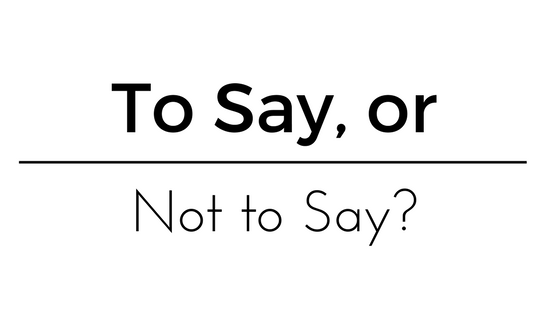
The power of discipline
At its worst, it destroys organisations, individuals, well-being and it tears teams apart. When it’s not managed well and it’s avoided it can cause substantial damage to a business. But equally disagreement and conflict, when handled well is the source of change, it’s the source of power and it’s the source of progress.
A lot of difficult conversation is driven by fear. We often think what’s going on in our head, is not going on in someone else’s head. We worry about what someone will think once we have said something. We constantly fear that the stakes are high.
In this world we have two different kinds of people:
Conflict Avoiders – They value harmony, have a belief that if they disagree they may hurt someone’s feelings and the relationship.
Strength – Not every issue has to be addressed.
Weakness – Avoiders can get very frustrated and may end up behaving in an undermined way rather that a direct way. Sometimes they don’t achieve goals and carry it personally.
Conflict Greeters – Happy to fight and advocate something from their own perspective. They don’t see conflict as being personal.
Strength – Can enable disputants the opportunity to enhance one’s power.
Weakness – Can be unaware of their impact on others or amplify dispute.
Sharing context is crucial
We often make assumptions that the way we see a situation is the same as someone else does. When a conflict avoider meets a Conflict Greeter, they see it as personal and as an attack. Whereas in fact, it might be direct and clear in the mind of a person who’s very happy to debate an issue.
Example
Senior leaders can be conflict seekers who’ve developed habits of communication/behaviour and would rather be honest and give more direct feedback. They may think it’s important to be more direct with people in order to be as supportive as possible and have the best interest of the individual at heart. But then the other person’s context is, “your senior, you’re scary, you’re direct, I feel like you insult me and you’ve actually got control over my career”. So whereas the senior leader looks at that relationship through their own lens and their own goodness, the other person isn’t feeling the same.
Taking this into account is useful because it means if we are in a situation where we feel someone is communicating in a direct way. We don’t need to assume that the impact on us is their intention. Many workplace disputes arise between the gap between intention and inflict. An impact is how people experience us and our intention is what’s going on on the inside.
If you’re in a position of power it’s important not to assume your intention is understood. And if you’re in the situation of experiencing someone’s behaviour as negative, it’s important not to assume that’s tentative.
How do you close the gap?
- Knowing yourself, thinking about that distinction between a Conflict Avoider and a Greeter.
- Sharing your context. Share your context – fully understand both sides of the story.
- Before you head into a room to have a difficult conversation break your conversation down into steps, be clear on what you want and want to achieve.
- Adopt a mindset of curiosity – understand the other person’s perspective, ask questions and it lets them know you’re interested. The more time you spend asking questions, the better the outcome. This is about preparing. Usually, we spend so much time thinking about what we want to say instead of spending time thinking about what we’re going to ask.
- Make sure your emotions are under control. Emotions will always be present in difficult conversations. Do what you can to regulate and manage your own but, don’t be afraid of other people’s emotions, this can get in the way of the objective.
- Get comfortable with the idea that people will disagree. This is a key element to effective communication. Listen without judgement and without threat.
- Make a safe connection, something that removes the threat. A positive followed by the concern and an observation.









Leave A Comment